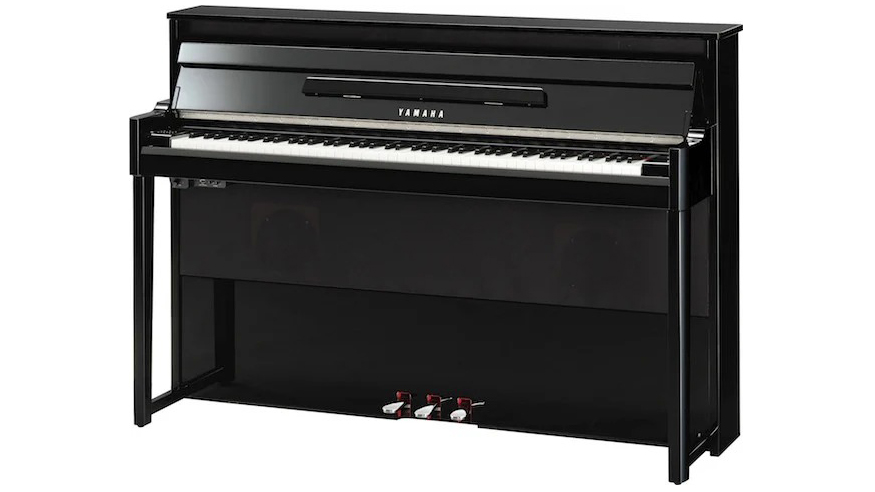How to solve stereo stage piano problems
Top tips for live situations

All stage pianos on the market have a range of different stereo piano sounds. For that matter, so do workstations and general-purpose ROMplers. They sound great in the store, incredible through headphones, and realistic enough on the gig to make you feel like you’re playing a real piano.
Under ideal circumstances, stereo pianos are hard to beat. The problem is, “ideal” is hard to achieve on the gig for any number of reasons. Maybe the P.A. is mono. Maybe you’re just offered one floor monitor. Maybe the room you’re playing in creates phase interference when you’re monitoring in stereo, which can result in a tinny sound with a thin or unnatural frequency response.
These problems, among others, can conspire to make your beautiful stereo stage piano sound terrible. Fortunately, there are some ways to deal with the issue that, while they may not completely fix the problem, can help make the situation more tolerable.
- The best MIDI keyboards for beginner and pro musicians
- Best synthesizers: keyboards, module and semi-modular synths
- The best digital pianos for all budgets
- Best acoustic pianos: budget to premium instruments for home and studio
Stereo to mono
So what can you do to make it through the gig? One quick fix you can try is to use only the right output on your keyboard. Most manufacturers make the left output the mono summing output (it automatically provides a mono mix when no 1/4" cable is detected in the right output), so by using only the right side you won’t suffer from the phase issues summing can create. The main drawback to this method is that you’ll tend to lose volume from the low end of the piano the farther down the key range you play, sometimes to a very significant degree. If your keyboard uses the right output for mono summing, the opposite is true— the left output will be weak in the upper-mid and high registers. This problem exists in proportion to how pronounced the “lows to the left, highs to the right” panning is on your piano patch—better stage pianos have learned to keep this subtle.
Some stereo pianos collapse to mono better than others. If the sound you hear using just the right output doesn’t appeal to you, try to find the stereo piano sound that works best in mono. It really doesn’t matter where you do the mono summing, whether you run from the mono jack on your keyboard or sum using a direct box or mixer—it will sound the same.
Tweak the EQ
Generally, the middle of the piano suffers the most from phase interference. These phase issues tend to muddy up the tone, sometimes severely. Typically the problems are greatest in the octaves immediately above and below middle C. Some stage pianos or mixers offer a sweepable mid frequency in their EQ. Try dialing it in somewhere in the 150-500Hz range and cutting some of the off ending frequencies to clarify the midrange. If your keyboard only offers graphic EQ, try tweaking the midrange controls on your mixer and/or your monitor. If you’re able to run stereo, but are suffering from phase issues in the room, moving your speakers a little may help, and judicious EQ can also clarify the sound. While these techniques can help you deal with issues you may encounter with stereo piano sounds, there is one other, more effective option to check out.
True mono
There used to be a time when sounds from a digital keyboard were all mono. The keyboard may have had stereo outputs, but if the sound could be used in stereo, it was simply the effect of panning the mono sound across the stereo spectrum. If you used the keyboard’s mono output or summed the signal externally via a mixer or the P.A., nothing devastating would happen to the sound—because it was monaural from the start. The sounds themselves, on the other hand, weren’t the most realistic. With storage ranging into the megabytes, and now gigabytes, becoming increasingly inexpensive, it became possible to create much more detailed piano samples, and make them true stereo.
Want all the hottest music and gear news, reviews, deals, features and more, direct to your inbox? Sign up here.
This means that finding mono piano sounds in stage pianos is becoming more difficult. Some, like the Korg SV-1 and Roland RD-700NX, include specific mono piano samples and patches. While you lose a bit of realism using a mono piano sound, it offers definite benefits over stereo. First and foremost, you can comfortably expect that what you hear on the stage is exactly what’s coming through the P.A. If there isn’t a P.A. and you’re just running into your stage monitor or keyboard combo amp, you’ve limited the variables that stereo can introduce by eliminating the stereo “sweet spot” and by providing a distinctly audible single point from which your sound originates. The net effect is that the audience is going to hear what you hear. In my opinion, these are good enough reasons to run my piano sounds in mono at all times.
While stereo may be your ideal, reality often rears its head onstage. Take time in advance of a gig to prepare piano sounds to deal with the problems you may run into with mono P.A. systems and monitoring. You can gain a little bit of control over unforeseen circumstances, helping make sure you always represent yourself at your musical best!
The Nord solution

Instead of investing the significant time and expense it takes to create new mono piano libraries, Clavia created algorithms that correct the phase issues that mono summing created in their existing (and future) stereo piano samples. The Nord Stage EX, Electro 3, Nord Piano, and their descendants access this feature via pressing the Shift button and a button marked (conveniently enough) Mono. The result is simple, elegant, and great sounding.